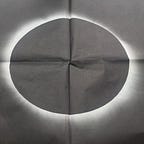Putin 5.0
--
As the Intelligence and Security Committee’s report into Russian activity in the UK was released, protests continued for the 10th consecutive day in the far eastern Russian city of Khabarovsk. Tens of thousands have poured out onto the streets, angry at what has been seen as the politically motivated arrest of popular but controversial local governor, Sergei Furgal. The protests, thousands of miles from Moscow, are a reminder that things are not so rosy for President Vladimir Putin. Despite a recent vote on constitutional amendments that would theoretically allow him to rule for a further two terms, the regime’s identity has deteriorated and is more fragile than ever. Mr Putin’s approval rating has dropped to a historic low.
Indeed, an increasingly active civil society, an anxious but powerful elite, and a stagnating economy battered by Covid-19 means that should Mr Putin want to rule until 2036, they will be the hardest years of his presidency.
First there are the voters. For all the thuggery and kleptocracy of Mr Putin’s rule, his legitimacy remains tied to the idea of public support. His popularity is a mix of genuine loyalty and apathy, with roots in the early 2000s oil boom which lifted millions out of poverty. It was the beginning of a social contract that provided economic growth and stability, but in return demanded the population turn a blind eye to the de-politicisation of public life. Voting became an act of theatre, the Kremlin deploying ‘government resources’ — propaganda, coercion, manipulation — to make sure Mr Putin’s validity could not be questioned and no alternatives emerge.
As economic growth stalled a conservative ‘fortress Russia’ narrative emerged. It continues to dominated politics today. In it, the Kremlin portrays Russia as a country besieged by internal and external enemies threatening its values. Mr Putin is, of course, the only capable defender. But the success of this narrative is waning. Most Russians care about schools, roads and hospitals. Others about the environment, internet freedoms and pensions. They want someone to tackle poor infrastructure, rising utility bills and unchecked corruption.
These issues have spawned protests across the country. Some have remained local and apolitical. Others have become about power and accountability. Either way the increase in protests point to rising if not disparate civic activism amongst parts of the population the Kremlin needs to keep onside. Mr Putin likes to portray himself as above everyday politics. But the more these grievances are linked to his rule, the harder it becomes for the president to avoid responsibility; especially when promises of a brighter future continue to ring hollow.
Next is the elite. It is not just legitimacy derived from the public that Mr Putin relies on — he also needs the support of those in power around him. The president’s system is dominated by a handful of political, financial and industry figures who, as their influence has grown, have accumulated interests and assets they want to protect. When this collides with structures that have long prevented traditional transfers of power, you get a problem. Indeed, the last few years has seen infighting bubble to the surface as elites have jostled to best position themselves for a potential post-Putin world. Power struggles have played out in boardrooms, across the court system, and within the media. How do you pass on a personalised system with no checks and balances? Who do you trust to pass it on to?
For now Mr Putin’s response to these questions has been to simply bury speculation by allowing himself to rule for another two terms. While this will buy him time, it is unlikely to assuage the worries of the elite in the long term. There remains no clear plan for Russia’s future.
Then there is the economy. Despite often being described as close to collapse it has shown itself to be surprisingly resilient thanks to a well managed central bank, a focus on macroeconomic stability, and large currency reserves. Years of sanction induced isolation has helped Moscow prepare itself for financial shocks. But the economy remains vulnerable and has long suffered from stagnation — a result of the political decision to prioritise control over growth.
Covid-19 has exacerbated these concerns, pushing back many of the national projects promised in 2018 and plunging the economy in to deep recession. While the government has rolled out a stimulus package the response has been slow, and the worry is it won’t be enough. Russia’s business ombudsman reported in May that 60 percent of companies may not survive the crisis. The economy could contract by as much as six percent this year.
To make matters worse, the pandemic has come on the back of a price crash and drop in demand for oil, Russia’s main export earner. It may take years for consumption to rebound. Any recovery will be complicated by market shifts towards decarbonisation and cheaper renewables. The Kremlin will find itself relying more on China, especially as relations with the West remain poor, but increased dependency will bring risks. To properly future proof its economy Moscow will need to not only welcome innovation and diversification, but also a fundamental restructure of power within a system that has long been resistant to change.
To be sure, there is no imminent crisis to the president’s leadership. The structures in place don’t really allow it. But the country has entered a strange kind of limbo. The vote to allow Mr Putin 12 more years was meant to be about stability and strength. Instead it has only highlighted the contradiction at the heart of the regime; Putinism is in decline, but there are no alternatives.
July 2020
